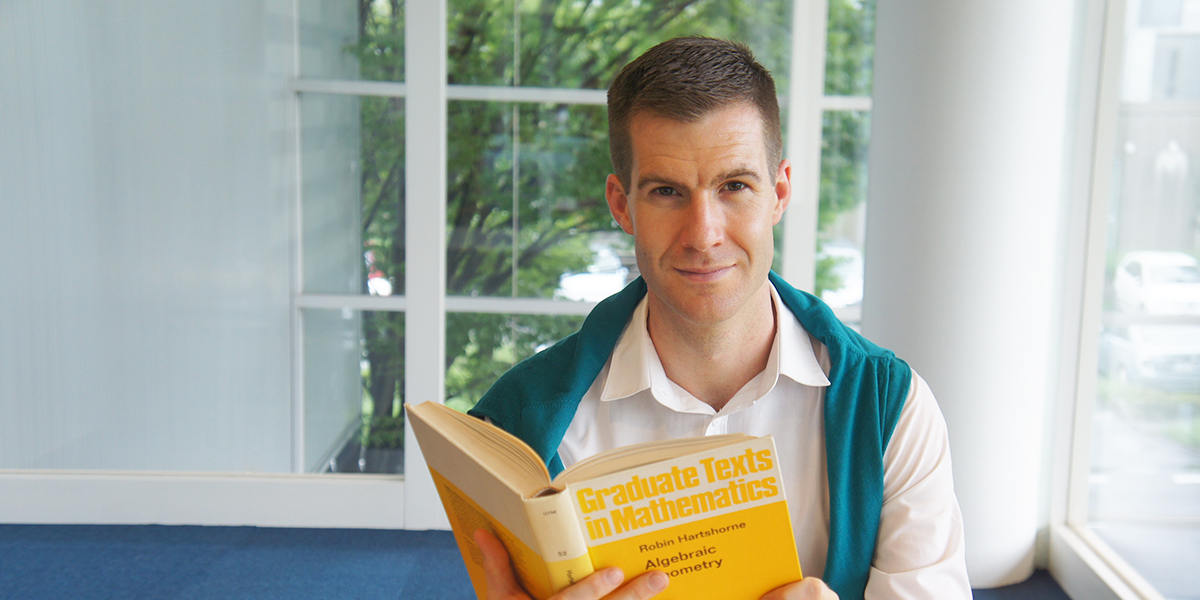
The Freedom to Discover Exciting Mathematical Patterns at Kavli IPMU
-
- Will Donovan
- Project Researcher, Kavli Institute for the Physics and Mathematics of the Universe
Area of research: Algebraic geometry
Country/Region of Origin: the United Kingdom
My Newfound Love of Japan Intersected with my Lifelong Passion for Mathematics
The first time I came to Japan was 10 years ago. After I graduated from university, I went to Kyoto on a working holiday visa with my girlfriend, who was working at a Japanese NGO. I stayed there for seven months, studying world literature and teaching English.
Captivated by Kyoto
As I had arrived there in February, my first impression of Kyoto was that it was cold. (laughs) We lived in a traditional-style house, which had paper walls and no heating. It was something I had to get used to. Since I was in Kyoto, an area rich in history, I visited a different temple every week. I also camped and hiked in the nearby mountains. My time there was peaceful and interesting, and I really got to experience the elegance of Japan.
Going to Kyoto from the UK was an intimidating move for me at first, but I ended up wanting to come back to Japan someday. Once I returned to the UK, I got a job in R&D at a major financial services company. However, I eventually realized that I wanted to transition back into academia. My undergraduate degree and Master’s degree were both in mathematics, and I wanted to continue studying mathematics at the doctoral level. So, I got my Ph.D. in mathematics and then joined the University of Edinburgh as a research assistant. After working there for three years, I applied to a number of research positions at institutes around the world, the first one being a position here at Kavli IPMU.
Back to Japan
I had considered jobs in countries including the UK, US, Germany, and others in Asia, but Kavli IPMU’s offer was the most tempting. First of all, I had received an excellent impression of the Institute and the people who work here. Also, the three-year position would give me a lot of freedom to do my own research. The final deciding factor, of course, was that it’s located in Japan! (laughs)
Living in Akihabara, Researching in Kashiwa
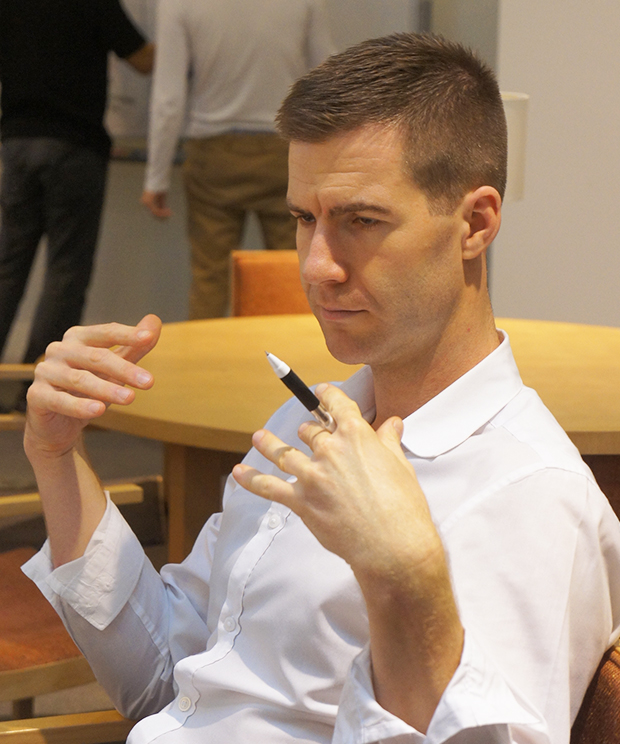
My second time coming to Japan, and first time staying in Tokyo, was in October. Unlike when I went to Kyoto, it wasn’t cold at all. It was beautiful, and the leaves were starting to change color. I was also surprised at how green and leafy the scenery in Kashiwa was—not what I was expecting from a city in the Tokyo metropolitan area!
Finding a home in Akihabara
Before I came to Japan, I looked up a lot of maps and satellite imagery on the Internet of various Tokyo neighborhoods just to get an idea of what they were like. Then, I spent an exciting first week here riding in taxis all over these neighborhoods, looking for an apartment. I eventually settled on a place in the Akihabara area of Tokyo. It’s a bit far from the Kashiwa Campus, but fortunately Kavli IPMU supports me by reimbursing my commuting costs.
I wanted to live in an environment different from back in the UK, and Akihabara is absolutely that. I like Akihabara because it’s very convenient, with lots of restaurants and bars, and the Electric Town area nearby. I also like the bustle around the station at rush hour.
Kavli IPMU staff members have been extremely helpful
Moving into an apartment here is expensive compared to the UK, but the process was quite easy, since the rental agents spoke English and staff members of Kavli IPMU helped me with the paperwork.
The staff members also helped me with a number of other things, such as getting a bank account. They even have someone here to help researchers with day-to-day issues, like paying bills and understanding notices in Japanese that come in the mail. I also had a contact at the Kavli IPMU office before arriving to Japan who was helpful in explaining immigration procedures and everything else I would need to do in order to come. Thanks to all of them, I was able to get settled in and build up a routine rather quickly.
Of course, that is not to say that my life here has not been without difficulty or confusion. Making sure I caught the right train every morning was tiring at first. One time I accidentally took the train to somewhere in Ibaraki Prefecture! But in general, I’ve gotten to know my surroundings and have found Japan to be a very convenient country.
Using Algebraic Geometry to Uncover the Symmetries of Six-dimensional Space
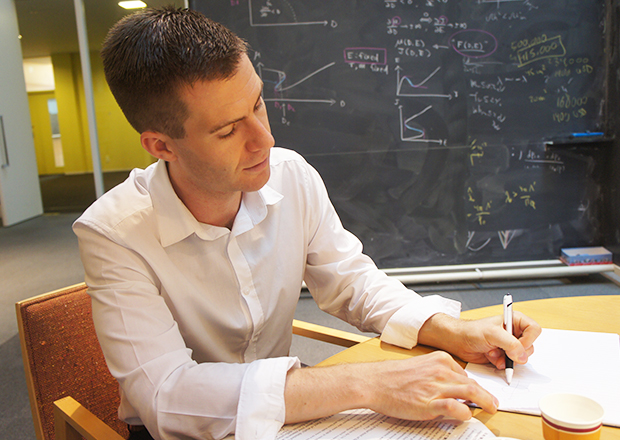
The area of mathematics in which I conduct research, algebraic geometry, is an old subject that goes back to the ancient Greeks. While this subject is at the heart of pure mathematics, it also has connections with other areas of study, such as cryptography, biology, and physics—the latter making Kavli IPMU a particularly good place to study this subject, as it fits in with the Institute’s vision to examine the physics and mathematics of the universe.
In essence, algebraic geometry is about studying and visualizing the solutions of algebraic equations geometrically. This can be done, for instance, in two-dimensional and three-dimensional spaces, and these spaces could be flat, or curved, like the surface of a sphere for example. By adding more variables to our equations, we can study spaces with more dimensions. Theoretical physicists also like to study spaces with many dimensions. As an example, in some physical theories, space-time is considered to be 10-dimensional. There are three known dimensions for space, one for time, and six remaining spatial dimensions that currently are not fully understood. One of the themes of my research is to study the geometry of these six-dimensional spaces to find different kinds of symmetries associated to them. These are interesting from a purely mathematical viewpoint, and they are also interesting in physics, where they may be thought of as quantum symmetries.
Symmetries in mathematics can occur for a shape, an equation, or an algebra. There are familiar symmetries, such as rotation and reflection, but the symmetries I am trying to discover and measure are more abstract: they can be found using something called homological algebra.
While here at Kavli IPMU, I have collaborated with physicists and mathematicians in Edinburgh, London, and the US, on two major research projects in this area. One project was about the general theory of symmetries for these six-dimensional spaces, and another was about particular pairs of these spaces called Pfaffian-Grassmannian Calabi-Yau pairs. In the latter project, we turned the relation between the two string theories of the spaces in a pair (physics) into a relation between two homological algebraic objects (mathematics). While we use computers to communicate, by writing, illustrating, or video chat, I generally prefer to use paper to work out all of the calculations.
Infinite Symmetries, Infinite Possibilities
As algebraic geometry is a purely mathematical field, it is difficult to say what implications my research findings may have for technology and science. However, one hope is that studying these symmetries for six-dimensional spaces will help to make new tools for theoretical physics, which in turn may contribute to a unified “Theory of Everything” someday.
The number of possible spaces and symmetries is infinite, and there are endless ways to think about them, and study them, so there is no definite end to my research. However, that also means that there is no end to finding exciting and interesting geometrical patterns. I’m always thinking about new ones!
Kavli IPMU Offers a Great Environment for Research
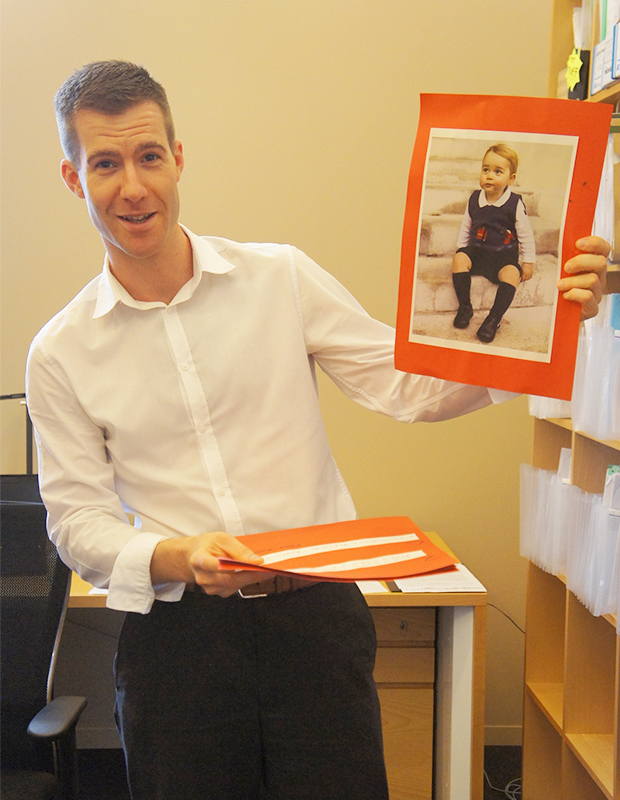 Showing us a project he did about Prince George for his Japanese class
Showing us a project he did about Prince George for his Japanese class
As I mentioned before, the staff at the Institute are very helpful. Furthermore, the environment here is great for research. There are many good people to work with here, both Japanese people and those from other countries, including established world leaders as well as younger researchers. There are very important people in the field of algebraic geometry and theoretical physics working here and at other institutions in Japan. Also, Kavli IPMU has great facilities, such as its excellent library, and the Institute provides support for research expenses. For instance, I collaborate with people in Edinburgh and London, so I have to travel to those cities sometimes. I also go to international conferences; this year alone, I have been to conferences in Beijing, Utah, Toronto, Germany, and the UK, with a conference in Mexico scheduled for next month. The Institute helps pay for these trips, allowing me to meet and interact with even more people and learn about the latest developments in my field.
A balance between individual freedom and interaction with other researchers
Overall, though, I’d have to say that the balance at Kavli IPMU is one of its most attractive points. As a researcher at the Institute, you are given the freedom to work individually. However, you are by no means isolated; through the daily teatime and other events scheduled at the Institute, you are given the opportunity to talk informally with other researchers. Since these researchers come from diverse backgrounds and specialize in different fields, talking with them can give you new ideas for and perspectives on your own research.
There are office rooms available for visiting researchers, so it’s easy to invite people to visit the Institute, as well. I have a colleague from Bonn coming to visit here soon, for example. The Institute also attracts famous visitors, such as Fields Medalist Edward Witten, to give presentations. It’s amazing that I get the chance to meet people like that.
I like the Japanese language because it’s different
Here at work, we communicate in English most of the time, though I am studying Japanese. I take lessons from a Japanese teacher here at the Institute as well as lessons at another place on the Kashiwa Campus. I wish Japanese were easier to learn, but I really like it because it’s quite different from English. I’m at the point where I’m starting to be able to have conversations in Japanese now, which is helpful in talking with people outside of work.
My favorite Japanese kanji, by the way, is 傘 (kasa, or umbrella). It always makes me laugh when I see it since it literally depicts four people standing under an umbrella. I’ve never seen an umbrella big enough for four people before!
Impressions and Future Plans
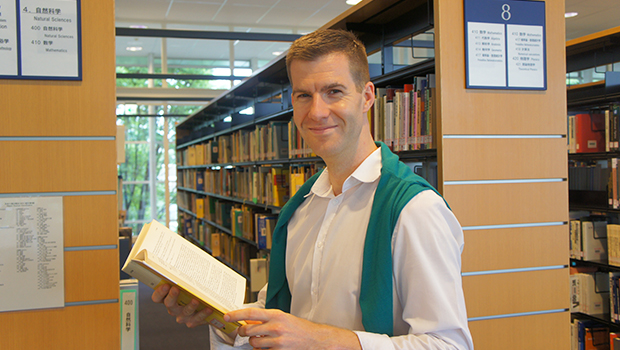
Coming to Tokyo was a big transition for me at first, but now things have become stable. I think that since coming here, I’ve become more polite and considerate of other people. I even catch myself bowing sometimes!
Although I’ve traveled internationally for my research, I haven’t explored Japan yet. In the future, I would like to visit other universities in Japan, like Kyoto University and Nagoya University. I also want to see other cities throughout the country.
I hope to be here at Kavli IPMU for a total of three years. In my next position, I may continue to focus on research, like I am doing now, or perhaps do more teaching, as a lecturer or professor. I am mainly thinking of returning to the UK, because of my family and friends who are there, but I can imagine staying in Japan to continue my research, or moving somewhere entirely different again.
Go for it!
I would advise anyone who is thinking about studying in Japan to go for it! Working here has given me a new perspective on academic life and life in general. It’s very different from life in the UK.
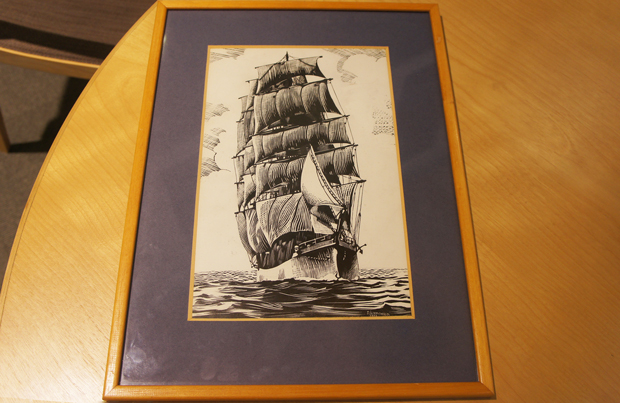
Traversing the Sea to Drop Anchor in Japan
Woodblock print made by Will’s grandfather of a seafaring ship
Will showed us this woodblock print that was made by his grandfather in 1939. His grandfather, who grew up near England’s Dover Strait, loved the sea and loved depicting it in his art. He trained to be a professional artist, but his studies were put on hold by World War II, during which he served in the Navy. Will brought this print, which he thinks may be of a nineteenth-century clipper ship, with him on his “voyage” to Japan, where it decorates the wall of his apartment and reminds him of home.
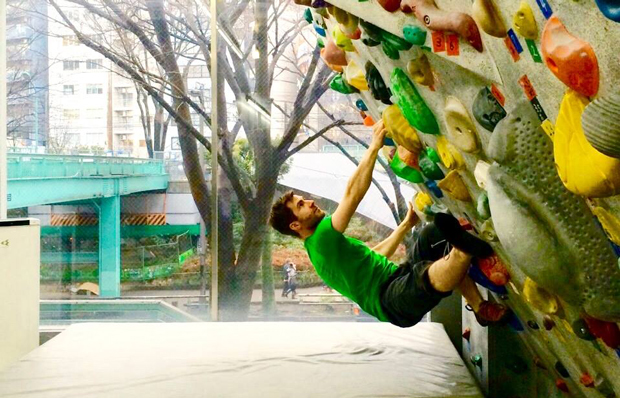
Life Outside of Research
Leading an active and healthy lifestyle
When he’s not doing research, you can find Will enjoying one of his many hobbies. For instance, cooking western-style foods using fresh vegetables is one of his passions. He also tries to exercise and stay active, and says he often likes to practice yoga at lunchtime. Will enjoys running, and he hopes to run in the Tokyo Marathon next year. He also likes bouldering; the picture is of Will taking on a rock climbing wall at a bouldering gym in Shibuya.





